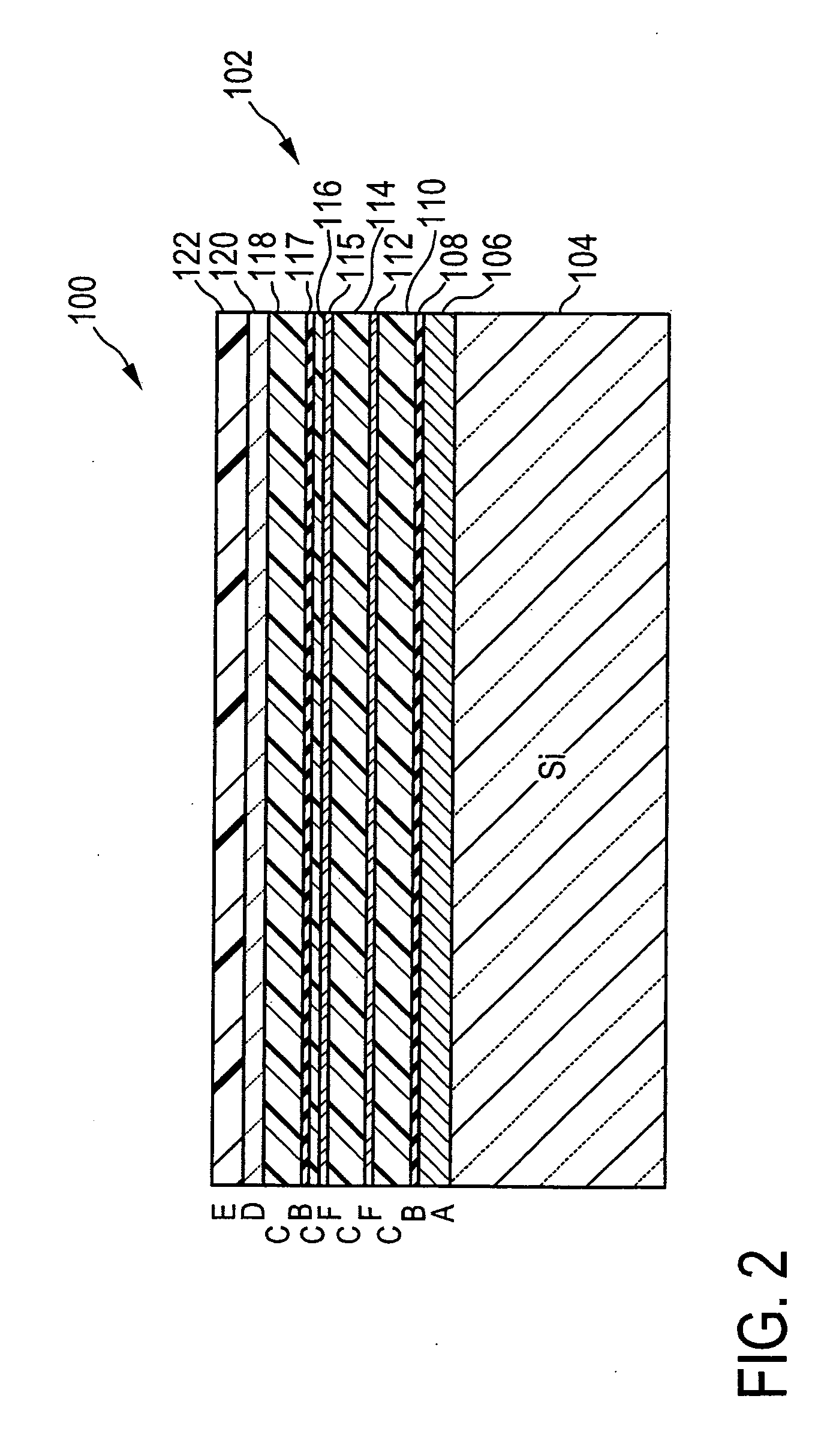Nitride semiconductor component layer structure on a group iv substrate surface
a technology of nitride semiconductor components and substrate surfaces, which is applied in the direction of basic electric elements, electrical equipment, crystal growth processes, etc., can solve the problems of poor crystal quality, amorphous or polycrystalline, and unsuitable for optoelectronic components that comply with present-day standards
- Summary
- Abstract
- Description
- Claims
- Application Information
AI Technical Summary
Benefits of technology
Problems solved by technology
Method used
Image
Examples
Embodiment Construction
[0038]FIG. 1 shows, to explain one embodiment of a nitride semiconductor component and to compare this with solutions from the prior art, a plan view of a Group IV substrate surface in the form of a) a silicon (100), b) a silicon (110) and c) a silicon(111) surface, each having an Al1-x-yInxGayN covering, where 0≦x, yb) is relevant as an embodiment of the invention; the other two FIGS. 1a) and 1c) show, by way of comparison, the structure of substrate surfaces already used in the prior art. The best lattice matching in one direction is obtained when ternary materials are used for Al0.97In0.03N and Al0.78Ga0.22N. Even slight admixing of Ga and In is helpful in improving the material parameters. When a quaternary material is used, the ideal concentrations of In and Ga are correspondingly lower. However, higher concentrations are also possible and may be advantageous, depending on the process, since then the lattice mismatch in the [1-10] direction is also reduced, albeit at the cost o...
PUM
 Login to View More
Login to View More Abstract
Description
Claims
Application Information
 Login to View More
Login to View More - R&D
- Intellectual Property
- Life Sciences
- Materials
- Tech Scout
- Unparalleled Data Quality
- Higher Quality Content
- 60% Fewer Hallucinations
Browse by: Latest US Patents, China's latest patents, Technical Efficacy Thesaurus, Application Domain, Technology Topic, Popular Technical Reports.
© 2025 PatSnap. All rights reserved.Legal|Privacy policy|Modern Slavery Act Transparency Statement|Sitemap|About US| Contact US: help@patsnap.com



